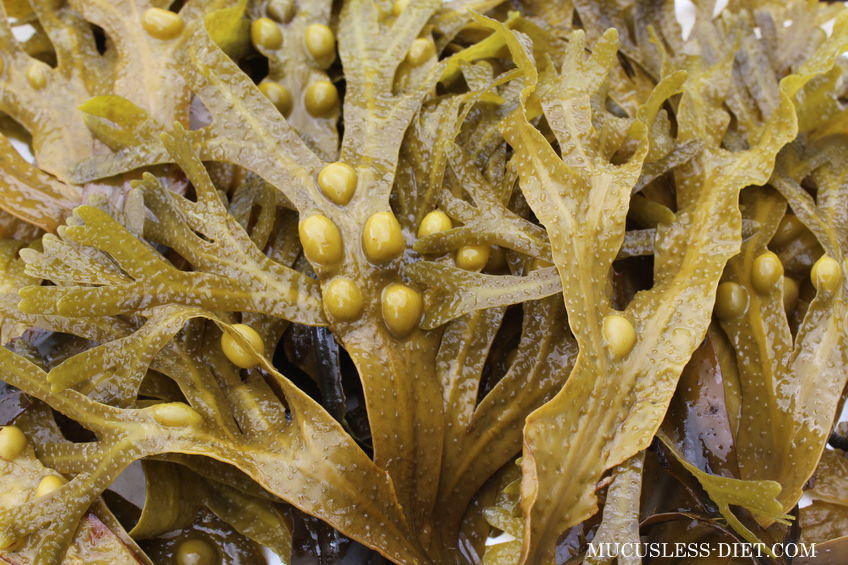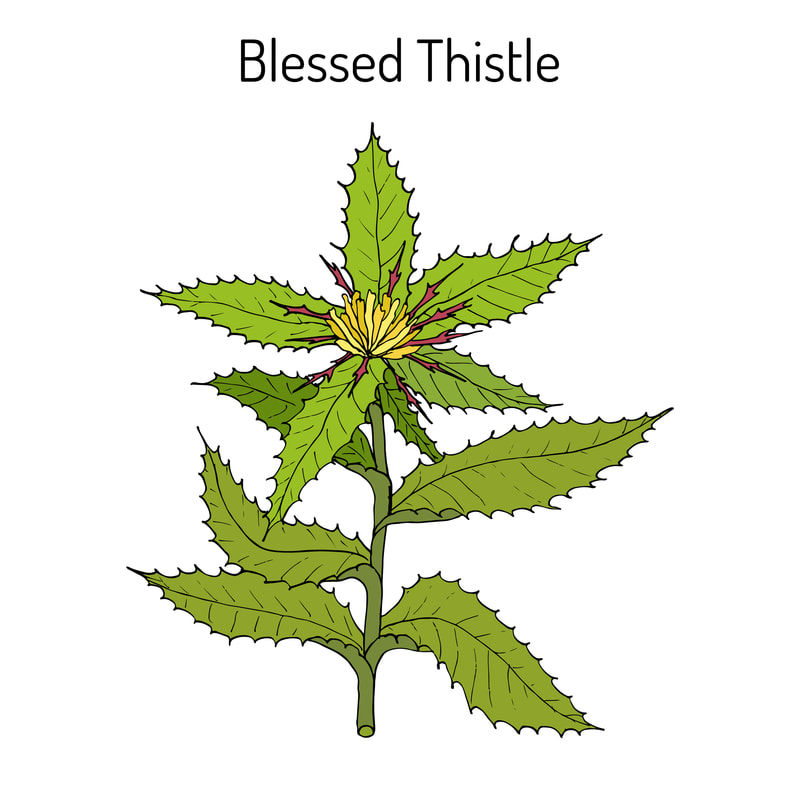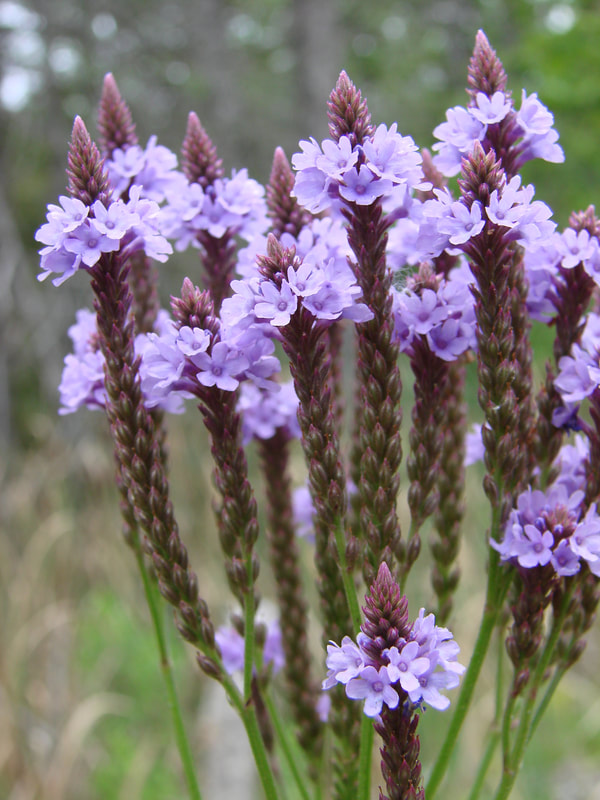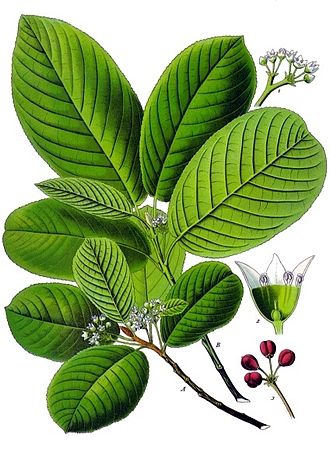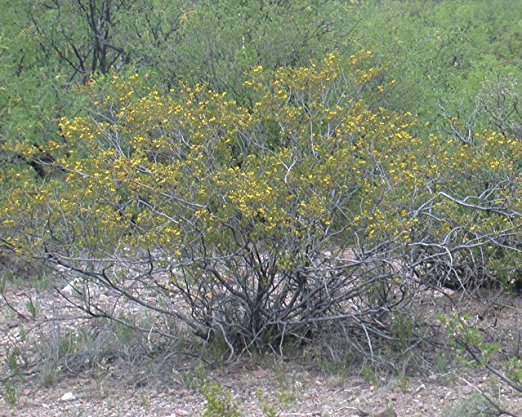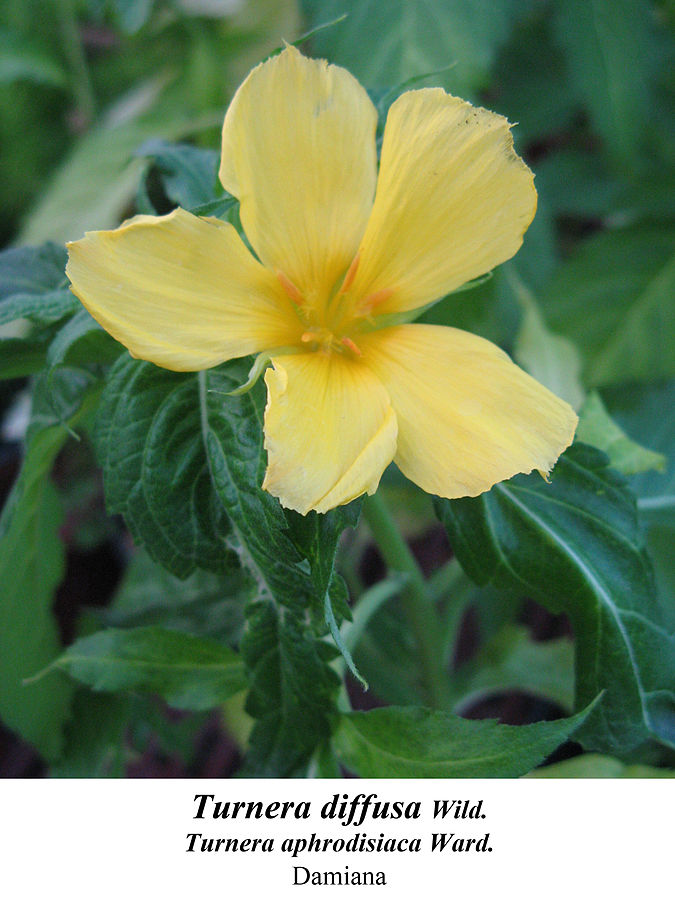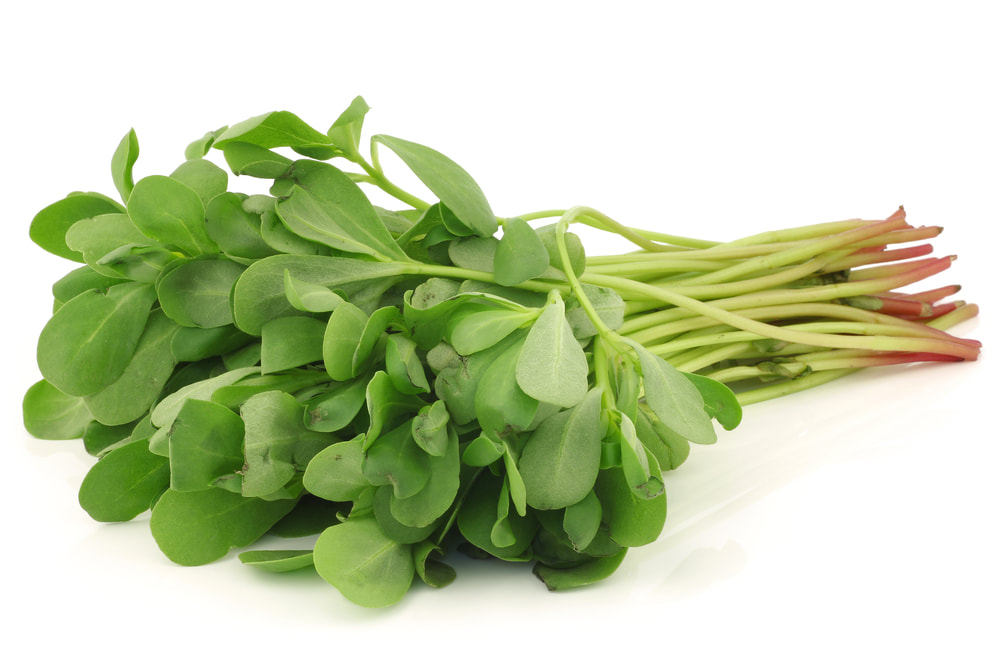WELCOME TO THE WORLD OF DR. SEBI HERBS AND SPICES
THIS ARTICLE IS COPYRIGHTED FOR MUCUSLESS-DIET.COM. ALL RIGHTS RESERVED. THERE ARE AFFILIATE LINKS IN THIS ARTICLE FOR COMPANIES I RECOMMEND. PLEASE READ OUR FULL DISCLOSURE POLICY.
TABLE OF CONTENTS
BLADDERWRACK
BLESSED THISTLE BLUE VERVAIN BURDOCK ROOT CASCARA SAGRADA CHAPARRAL CONTRIBO DANDELION DANIAMA ELDERBERRY EYEBRIGHT GRAVIOLA HYDRANGEA LILY OF THE VALLEY NETTLES NOPAL PRODIJIOSA PURSLANE RED CLOVER RHUBARB ROOT SAGE SANTA MARIA SARSAPARILLA IRISH SEA MOSS VALERIAN YELLOW DOCK |
HERE WE HAVE BROUGHT YOU THE HERBS FROM DR. SEBI.
This is a huge mega article with information on each herb we recommend, where to purchase, why you should purchase and side effects in many cases. You can look through the table of contents and click on each herb individually and it will take you to separate pages on that particular herb or read thru the mega article and read on all the herbs we have selected. Keep in mind Dr. Sebi said there may be many herbs that are natural and not on his list and those herbs are approved. Please avoid all hybrid herbs. 1. BLADDERWRACK
Bladderwrack is a common type of seaweed, which is almost similar to Kelp. It is known as ‘Fucus Vesiculosus’. This herb thrives in various parts of the world’s oceans, particularly around North America’s Eastern Coast. Its thick stem, ‘thallus’, contains air filled pods that assist this seaweed float to the surface. This thallus part is the key beneficial part of bladderwrack that holds many health benefits. Though, bladderwrack has been used in alternative medicines for hundreds of years, but recently its demand is rising. General public is using it as an herbal supplement and including it in their nutritional diet. |
|
It has high levels of mucilage, iodine, potassium, and other organic compounds. Especially, in iodine, it is very rich and an early source of this mineral.
Let’s take a closer look at some of its health benefits. Bladderwrack |
benefits include: thyroid improvement, weight loss, better vision, anti-aging, boost heart health, improves women's health and more. Remember that bladderwrack is included in many of Dr. Sebi's products and protocols including the Bromide Plus Mix.
BUY ON AMAZON.COM BUY ON IHERB BUY ON STARWEST BOTANICALS
BUY ON AMAZON.COM BUY ON IHERB BUY ON STARWEST BOTANICALS
BLESSED THISTLE
|
Blessed Thistle has an ability to cure numerous ailments. It is also known as ‘Holy Thistle’ or ‘St. Benedict’s Thistle’. This thistle-like plant is from the family of Asteraceae, which is native to Mediterranean region. However, it is quite famous in other parts of the world too, including France, Iran, and North America.
In case you are thinking why it has the title of ‘Blessed’, it is because, in the first century, the army of king of the Franks was dying of the plague, while they were on their way to control Europe. This plant saved their lives from the plague and allowed them to continue war. From that moment, it became known as blessed & earned the attention of researchers. |
PPHerbalists indeed call it a gift from God, particularly for women, as it facilitates in resolving many female related problems. It increases milk supply and also treats hormone imbalance. Furthermore, it also contains astringent compounds that shrink inflamed tissues and dilate peripheral blood vessels.
According to herbalist Steven Horne, it is a warrior plant. One can use it as an incredible survival food because of its exceptional medicinal properties. For example, the best thing about Blessed Thistle is it specifically works on your bloodstream and protects it against toxins. That’s why, when it comes to detoxifying liver, herbalists prefer it over other herbs.
Blessed Thistle is available in many forms, such as capsules and tinctures. You can use it in teas as well. Just add 1 tablespoon dried herb in 1 cup of hot boiling water. Though, bear in mind that it is better to have it before eating a fatty meal, rather than after it. In addition, don’t use it if you are pregnant or allergic to artichokes.
If you are planning to cure some chronic illness, it is better to consult a qualified health practitioner before using Blessed Thistle as a remedy.
Properties: Antibacterial, anti-inflammatory, anti-microbial, promotes digestive health, stimulates appetite, helpful for upset stomach, shrinks inflamed tissues, stimulates milk supply, protects liver, and helps in treating jaundice, fevers, and arthritis.
BUY BLESSED THISTLE HERE: You can buy blessed thistle a number of places, but I really do love this one. This is from Starwest Botanicals and located on Amazon.com - You can also buy it direct from the Starwest Botanicals Website also if you prefer to shop there.
Sources:
https://wellnessmama.com/375/blessed-thistle/
https://en.wikipedia.org/wiki/Cnicus
https://www.indigo-herbs.co.uk/natural-health-guide/benefits/blessed-thistle
According to herbalist Steven Horne, it is a warrior plant. One can use it as an incredible survival food because of its exceptional medicinal properties. For example, the best thing about Blessed Thistle is it specifically works on your bloodstream and protects it against toxins. That’s why, when it comes to detoxifying liver, herbalists prefer it over other herbs.
Blessed Thistle is available in many forms, such as capsules and tinctures. You can use it in teas as well. Just add 1 tablespoon dried herb in 1 cup of hot boiling water. Though, bear in mind that it is better to have it before eating a fatty meal, rather than after it. In addition, don’t use it if you are pregnant or allergic to artichokes.
If you are planning to cure some chronic illness, it is better to consult a qualified health practitioner before using Blessed Thistle as a remedy.
Properties: Antibacterial, anti-inflammatory, anti-microbial, promotes digestive health, stimulates appetite, helpful for upset stomach, shrinks inflamed tissues, stimulates milk supply, protects liver, and helps in treating jaundice, fevers, and arthritis.
BUY BLESSED THISTLE HERE: You can buy blessed thistle a number of places, but I really do love this one. This is from Starwest Botanicals and located on Amazon.com - You can also buy it direct from the Starwest Botanicals Website also if you prefer to shop there.
Sources:
https://wellnessmama.com/375/blessed-thistle/
https://en.wikipedia.org/wiki/Cnicus
https://www.indigo-herbs.co.uk/natural-health-guide/benefits/blessed-thistle
BLUE VERVAIN
|
Blue Vervain is a slender and an erect perennial plant, common in North America. This plant has green to reddish stems and tooted leaves. It is 5’ tall and has 6” leaves, which are in opposite direction with double-serate margins. It is also known as Verbena Hastata and American Vervain.
The flowers on Blue Vervain appear in summer and are purple in color. They are densely crowed with numerous blue-violet flowers. However, the actual blooming period of this plant occurs from mid-late summer, which lasts for 30-45 days. This blooming period provides a floral scent to its flowers. It also replaces them by small nutlets (4 nutlets per flower). Most people don’t know about Blue Vervain. It is indeed a lesser-known herbal remedy. But, when it comes to its medicinal properties, it has |
magical powers. Research shows that its leaves and flowers contain many active components. They have antispasmodic, antipyretic, and diuretic properties. Furthermore, it also assists in soothing the nervous system, detoxifying the body, lowering inflammation, and alleviating chest congestion.
Because of these exceptional properties, the Romans and Greeks believed that it is a holy plant. Even a well-renowned Greek physician, Hippocrates, often recommended this herb for almost all kinds of fever and plague. Also, some historians believe that Blue Vervain was used on Jesus wound too after he was removed from the cross.
This herb can be consumed in many forms. Most herbalists recommend using it as tea. Since, according to them, it has potent and fast-acting effects with unique composition of acids and phytochemicals. That’s why it is better to combine it with tea. Just infuse its leaves, roots, and flowers in warm water and relish it.
Remember that herbalists recommend only small doses of Blue Vervain. Because of its potency, large doses can cause diarrhea or vomiting. Moreover, if you are pregnant or nursing, speak with your doctor first, as it interferes with blood pressure too.
Properties: Antibacterial, antimicrobial, detoxifies body, treats respiratory disorder, cardio-protective, boosts gum health, keeps nervous system healthy, anti-anxiety relaxant, relieves depression, eases menstruation, anti-inflammatory, and reduces swelling.
Sources:
https://www.organicfacts.net/health-benefits/herbs-and-spices/blue-vervain.html
https://en.wikipedia.org/wiki/Verbena_hastata
https://draxe.com/vervain/
Because of these exceptional properties, the Romans and Greeks believed that it is a holy plant. Even a well-renowned Greek physician, Hippocrates, often recommended this herb for almost all kinds of fever and plague. Also, some historians believe that Blue Vervain was used on Jesus wound too after he was removed from the cross.
This herb can be consumed in many forms. Most herbalists recommend using it as tea. Since, according to them, it has potent and fast-acting effects with unique composition of acids and phytochemicals. That’s why it is better to combine it with tea. Just infuse its leaves, roots, and flowers in warm water and relish it.
Remember that herbalists recommend only small doses of Blue Vervain. Because of its potency, large doses can cause diarrhea or vomiting. Moreover, if you are pregnant or nursing, speak with your doctor first, as it interferes with blood pressure too.
Properties: Antibacterial, antimicrobial, detoxifies body, treats respiratory disorder, cardio-protective, boosts gum health, keeps nervous system healthy, anti-anxiety relaxant, relieves depression, eases menstruation, anti-inflammatory, and reduces swelling.
Sources:
https://www.organicfacts.net/health-benefits/herbs-and-spices/blue-vervain.html
https://en.wikipedia.org/wiki/Verbena_hastata
https://draxe.com/vervain/
WHERE DO I BUY BLUE VERVAIN? You can buy blue vervain at a number of places, but I really do love Best Botanicals powder form. You can also buy the dried form here. You can also buy it direct from the Starwest Botanicals Website also if you prefer to shop there.
BUY ON AMAZON.COM BUY ON STARWEST BOTANICALS BUY ON IHERB
BUY ON AMAZON.COM BUY ON STARWEST BOTANICALS BUY ON IHERB
BURDOCK ROOT
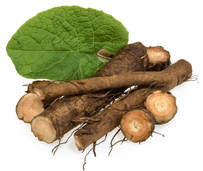
Burdock Root is a Eurasian species of plants in the sunflower family. It is native to the Northern Europe and Siberia. This plant is cultivated in the gardens for its roots used as vegetable and medicinal herb. Since earlier times, farmers indeed cultivate them on a larger scale due to its immense demand in the medical industry.
Though, the burdock plant is wild, but it is easy growing plant as well. That’s why it exists in almost all parts of the world. Luckily, it is quite easy to identify it too. They are about a meter in height with broad, heart-shaped leaves.
If it is still a tad baffling for you to recognize this plant, focus on the color of leaves. The top of their leaves are deep green, while the underside is light green. Furthermore, its stems, which are almost 5 feet in length, have red-purple tubular flowers that after a few weeks turn into seed-heeds with hooked spines.
All the parts of the Burdock plant can be used for certain medical conditions. But, its 2-3 feet root, which is brownish and has almost similar shape carrot, possesses the actual benefits. It grows to its actual length near its harvesting time.
When it comes to health benefits, the properties of this root are exceptional and uncountable. It is a powerhouse of antioxidants and protects cells in the body from damage. Due to its multiple types of powerful antioxidants, herbalists use it for treating and preventing different health conditions. For example, it can inhibit the growth of cancer cells and tumors. However, according to experts, it is a significant finding that demands more research from the experts. You can’t signify it as a key blood purifier only.
Apart from this, the most interesting thing about burdock root is it is aphrodisiac. Research has shown that it facilitates in enhances the sexual function and elevating mood too.
Properties: Natural diuretic, reduce body weight, skin healer, combat cancer, removes toxins from blood, improves arthritis, fight tonsillitis, prevent infection, control heart rate and blood pressure, regulate cholesterol levels in the blood, and cure diabetes.
WHERE DO I BUY MY BURDOCK ROOT?? You can buy burdock root chopped or in powder. The chopped is in tiny pieces and I use that in my teas. The powders I use in my supplement mixes such as in my bromide plus mix. The brands I prefer are Frontier and Best Botanicals Brands. The prices is very reasonable too.
You can buy the burdock root on Starwest Botanicals now. Shop Here.
BUY ON STARWESTWEST BOTANICALS - BUY ON IHERB - - BUY ON AMAZON
Sources:
https://www.nutrition-and-you.com/burdock-root.html
https://draxe.com/burdock-root/
https://www.healthline.com/health/burdock-root#benefits
Though, the burdock plant is wild, but it is easy growing plant as well. That’s why it exists in almost all parts of the world. Luckily, it is quite easy to identify it too. They are about a meter in height with broad, heart-shaped leaves.
If it is still a tad baffling for you to recognize this plant, focus on the color of leaves. The top of their leaves are deep green, while the underside is light green. Furthermore, its stems, which are almost 5 feet in length, have red-purple tubular flowers that after a few weeks turn into seed-heeds with hooked spines.
All the parts of the Burdock plant can be used for certain medical conditions. But, its 2-3 feet root, which is brownish and has almost similar shape carrot, possesses the actual benefits. It grows to its actual length near its harvesting time.
When it comes to health benefits, the properties of this root are exceptional and uncountable. It is a powerhouse of antioxidants and protects cells in the body from damage. Due to its multiple types of powerful antioxidants, herbalists use it for treating and preventing different health conditions. For example, it can inhibit the growth of cancer cells and tumors. However, according to experts, it is a significant finding that demands more research from the experts. You can’t signify it as a key blood purifier only.
Apart from this, the most interesting thing about burdock root is it is aphrodisiac. Research has shown that it facilitates in enhances the sexual function and elevating mood too.
Properties: Natural diuretic, reduce body weight, skin healer, combat cancer, removes toxins from blood, improves arthritis, fight tonsillitis, prevent infection, control heart rate and blood pressure, regulate cholesterol levels in the blood, and cure diabetes.
WHERE DO I BUY MY BURDOCK ROOT?? You can buy burdock root chopped or in powder. The chopped is in tiny pieces and I use that in my teas. The powders I use in my supplement mixes such as in my bromide plus mix. The brands I prefer are Frontier and Best Botanicals Brands. The prices is very reasonable too.
You can buy the burdock root on Starwest Botanicals now. Shop Here.
BUY ON STARWESTWEST BOTANICALS - BUY ON IHERB - - BUY ON AMAZON
Sources:
https://www.nutrition-and-you.com/burdock-root.html
https://draxe.com/burdock-root/
https://www.healthline.com/health/burdock-root#benefits
CASCARA SAGRADA
|
Cascara Sagrada is a natural, potent herb. It is produced from the bark of the Rhamnus Purshiana tree. It grows natively along the pacific coast of North America; from southern British Columbia to central California. The other common names of Cascara Sagrada are bitter bark, buckthorn, chitem bark, and sacred bark.
The leaves of Cascara Sagrada are simple, deciduous, and clustered near the end of twigs. They are shinier green from top and paler green below. They are in oval shape; around 15 cm long and 2-5 cm broad. These days, it isn’t easy to locate Cascara Sagrada. Since, due to high market demand and over harvesting, their populations have reduced significantly. If you |
haven’t noticed them in their native land yet, look for streamside and in moist forest. You can find them in these places without any trouble.
University of Michigan Health System experts believe that Native Americans started using this herb during 15th century, especially when they introduced it as a remedy to the explorers from Spain. They used it as a laxative to treat constipation. It smoothes muscle cells in the large intestine. Even today, more than 20% national laxative market in the U.S.A depends on it. It is worth approximately $100 million each year.
But, modern day researchers have found a million more health benefits of Cascara Sagrada. They believe this herbal remedy can challenge many over-the-counter medicines. It has the ability to treat many issues like digestive problems, muscle and joint pains, hemorrhoids, and anxiety. Furthermore, it is quite effective against many major diseases like cancer too. Researchers have investigated its application in cancer treatment. They’ve discovered that its active constituent emodin can inhibit cancer growth through a precise mechanism.
Other than that, the same active constituent, emodin, is antimicrobial and anti-inflammatory. It prevents bacteria and shows promising results against inflammation too.
This herb is usually taken in liquid extract or in tablet/capsule form.
Properties: Antimicrobial, anti-inflammatory, anti-fungal, prevents cancer, treats constipation, protects against liver diseases, diminish the occurrence of hemorrhoids, improves emotional well-being, protects against amnesia, and cures anxiety.
University of Michigan Health System experts believe that Native Americans started using this herb during 15th century, especially when they introduced it as a remedy to the explorers from Spain. They used it as a laxative to treat constipation. It smoothes muscle cells in the large intestine. Even today, more than 20% national laxative market in the U.S.A depends on it. It is worth approximately $100 million each year.
But, modern day researchers have found a million more health benefits of Cascara Sagrada. They believe this herbal remedy can challenge many over-the-counter medicines. It has the ability to treat many issues like digestive problems, muscle and joint pains, hemorrhoids, and anxiety. Furthermore, it is quite effective against many major diseases like cancer too. Researchers have investigated its application in cancer treatment. They’ve discovered that its active constituent emodin can inhibit cancer growth through a precise mechanism.
Other than that, the same active constituent, emodin, is antimicrobial and anti-inflammatory. It prevents bacteria and shows promising results against inflammation too.
This herb is usually taken in liquid extract or in tablet/capsule form.
Properties: Antimicrobial, anti-inflammatory, anti-fungal, prevents cancer, treats constipation, protects against liver diseases, diminish the occurrence of hemorrhoids, improves emotional well-being, protects against amnesia, and cures anxiety.
YOU CAN BUY CASCARA SAGRADA: You can buy my favorite brand - Best Botanicals and get it in powder form here. You can also buy in capsules but buying the powder and making your own mixed capsules is best. The chelation formula is cascara sagrada, rhubarb root and prodijiosa.
You can buy the cascara sagrada on Starwest Botanicals now. Buy Here.
BUY ON AMAZON.COM BUY ON STARWEST BOTANICALS BUY ON IHERB
Sources:
https://www.healthline.com/health/cascara-sagrada-constipation#how-it-works
https://healthyfocus.org/benefits-of-cascara-sagrada/
https://www.livestrong.com/article/154146-what-is-cascara-sagrada-good-for/
You can buy the cascara sagrada on Starwest Botanicals now. Buy Here.
BUY ON AMAZON.COM BUY ON STARWEST BOTANICALS BUY ON IHERB
Sources:
https://www.healthline.com/health/cascara-sagrada-constipation#how-it-works
https://healthyfocus.org/benefits-of-cascara-sagrada/
https://www.livestrong.com/article/154146-what-is-cascara-sagrada-good-for/
CHAPARRAL
|
Chaparral, also known as creosote bush and jarilla hembra, is a strong healing herb. It is famous for curing the incurable. It is tough to guess its potency just by looking at it, as it has small leaves. But, herbalists reveal that they have exceptional healing abilities. They cleanse your body and protect you against many deadly diseases.
This herb grows in the deserts parts of the American Southwest. However, you can easily find them in the lands of Mexico as well. Many studies claim that it is one of the oldest herbs on planet Earth; over |
11,000 years old. Our ancestors have counted on it to alleviate many health issues. Even today, it is a well known medicine in the herbal field.
Although, this herb is obtainable in many types, but one of the most popular types is dried herb. Herbalists use dried herb in tea to avail its core benefits.
Although, this herb is obtainable in many types, but one of the most popular types is dried herb. Herbalists use dried herb in tea to avail its core benefits.
The chaparral has many benefits, but people call it ‘the cure for incurable’ because of its anti-cancer properties. It is anti-tumor agent, nor-dihihydroguairetic (NDGA), and inhibits the energy producing ability of cancer cells. Moreover, it also slows down cell proliferation and doesn’t let the disease cause any damage to DNA.
But, this is just the tip of an iceberg.
Chaparral contains numerous other properties that give this herb an edge over other herbs. For example, it has Tricyclic Lignans compounds, which are anti-HIV agent. They are immensely powerful and known as a natural anti-viral treatment option. In addition, this herb can be used for alleviating rheumatic pain, stomach pain, chicken pox, and snake bite pain as well.
In 1943, US War Food Administration approved this herb as a food antioxidant. Later, it has also been promoted as a blood purifier and weight loss agent. But experts don’t recommend this herb for patients with poor kidney functions and pregnant women.
Properties: Anti-cancer, anti-HIV, treats acne, cures diabetes, promotes weight loss, purifies blood, prevents skin infections, heals minor wounds, alleviate arthritis and back pain. It also treats urinary tract infections, menstrual disorders, & premenstrual syndrome.
But, this is just the tip of an iceberg.
Chaparral contains numerous other properties that give this herb an edge over other herbs. For example, it has Tricyclic Lignans compounds, which are anti-HIV agent. They are immensely powerful and known as a natural anti-viral treatment option. In addition, this herb can be used for alleviating rheumatic pain, stomach pain, chicken pox, and snake bite pain as well.
In 1943, US War Food Administration approved this herb as a food antioxidant. Later, it has also been promoted as a blood purifier and weight loss agent. But experts don’t recommend this herb for patients with poor kidney functions and pregnant women.
Properties: Anti-cancer, anti-HIV, treats acne, cures diabetes, promotes weight loss, purifies blood, prevents skin infections, heals minor wounds, alleviate arthritis and back pain. It also treats urinary tract infections, menstrual disorders, & premenstrual syndrome.
WHERE CAN YOU PURCHASE CHAPARRAL? You can buy my favorite brand - Best Botanicals and get it in powder form here. You can also buy in extract also but buying the powder and making your own mixed capsules is best. The chelation formula is cascara sagrada, rhubarb root and prodijiosa.
You can buy the chaparral on Starwest Botanicals now. Here
Sources:
https://www.drugs.com/npc/chaparral.html
http://www.holistichealthliving.com/the-health-benefits-dangers-of-chaparral-herb/
https://www.mountainroseherbs.com/products/chaparral-leaf/profile
You can buy the chaparral on Starwest Botanicals now. Here
Sources:
https://www.drugs.com/npc/chaparral.html
http://www.holistichealthliving.com/the-health-benefits-dangers-of-chaparral-herb/
https://www.mountainroseherbs.com/products/chaparral-leaf/profile
CONTRIBO
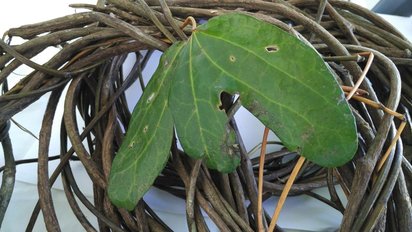
Contribo is a very unique herb. It grows along stream and in other wet areas. It is notable for its use in western herbal medicine. However, we often find Contribo in Ayurvedic medicine and Traditional Chinese Medicine (TCM). Besides, unlike many other herbs, Contribo has well-documented history of medical use (since 300 BCE).
Various cultures around the world use Contribo for treating numerous diseases. Even ancient Greeks, Romans, and Byzantines have used it in their pharmaceutical recipes to treat a variety of health conditions. Their experts utilized this herb to treat conditions like kidney ailments, bladder stones, gout, snakebite, uterine complaints, and insomnia.
There are numerous ways to use this herb. Some people soak it in water before relishing it as a cup of tea, while others use it with honey and olive oil. Herbalists recommend using its water as a lotion too, specifically for treating wounds and skin infections.
Modern-day researchers are investigating Contribo properties even more. According to them, it holds a lot more power than you can imagine. For example, when you infuse it in water and consume it, it gives your body immense power to fight with cold and flu. Its properties are a lot more powerful and effective than many famous medicines. Fortunately, they are without any kind of side effects too. However, if you are on some other medications, it is better to consult your doctor first before relying on this herb.
In addition, if you have some appetite issues, Contribo can assist in that as well. It enhances the appetite and aids in improving your overall health.
There are some precautions that you must consider before using this herb. Experts believe one should avoid continuous use of Contribo as it contains aristolochic acid. Because of its poisonous nature, continuous use of it can damage human health in the long run.
Properties: It’s a remedy against poisonous effects of snake bite, alleviates fever, enhances appetite, heals bruises and wounds, treats kidney ailments, bladder stones, uterine complaints, beneficial for women giving birth, and builds strength against cold.
WHERE CAN YOU BUY CONTRIBO? HERE
FOR DOSAGES AND USAGE - GO HERE
Sources:
https://www.organicbelize.com/products/contribo
http://italisvital.info/where-to-buy-herbs/
http://lwmii.blogspot.com/2009/06/herbs-contribo.html
Various cultures around the world use Contribo for treating numerous diseases. Even ancient Greeks, Romans, and Byzantines have used it in their pharmaceutical recipes to treat a variety of health conditions. Their experts utilized this herb to treat conditions like kidney ailments, bladder stones, gout, snakebite, uterine complaints, and insomnia.
There are numerous ways to use this herb. Some people soak it in water before relishing it as a cup of tea, while others use it with honey and olive oil. Herbalists recommend using its water as a lotion too, specifically for treating wounds and skin infections.
Modern-day researchers are investigating Contribo properties even more. According to them, it holds a lot more power than you can imagine. For example, when you infuse it in water and consume it, it gives your body immense power to fight with cold and flu. Its properties are a lot more powerful and effective than many famous medicines. Fortunately, they are without any kind of side effects too. However, if you are on some other medications, it is better to consult your doctor first before relying on this herb.
In addition, if you have some appetite issues, Contribo can assist in that as well. It enhances the appetite and aids in improving your overall health.
There are some precautions that you must consider before using this herb. Experts believe one should avoid continuous use of Contribo as it contains aristolochic acid. Because of its poisonous nature, continuous use of it can damage human health in the long run.
Properties: It’s a remedy against poisonous effects of snake bite, alleviates fever, enhances appetite, heals bruises and wounds, treats kidney ailments, bladder stones, uterine complaints, beneficial for women giving birth, and builds strength against cold.
WHERE CAN YOU BUY CONTRIBO? HERE
FOR DOSAGES AND USAGE - GO HERE
Sources:
https://www.organicbelize.com/products/contribo
http://italisvital.info/where-to-buy-herbs/
http://lwmii.blogspot.com/2009/06/herbs-contribo.html
DAMIANA
|
Damiana is a wild shrub. It is aromatic and belongs to the Turneraceae plant family. It is popular among herbalists since the ancient Aztec time. They find this herb in abundance in Mexico, Central America, and West Indies to treat different ailments.
According to historians, the name of this herb comes for the Greeks. They used to call it Daman or Damia, which means ‘to tame or subdue’. They used its leaves in herbal smoking blends and in liquors as well to calm their nerves. It helped them in increasing sexual desires too. And, the modern researchers confirm this. They have confirmed Damiana effects in a lab study on rats. It showed its aphrodisiac properties and increased the desires in those rats which were either sexually sluggish or fatigued. It also reduced their anxiety and made them appear calmer. |
But, this isn’t just rat study or a history thing. The native people of Mexico still use this herb to increase their energy and boost their sexual potency. They indeed treat their potency and menstrual problems through Damiana. Therefore, if you specifically deal with anxiety, depression, nervousness, tension, or sexual problems, you can’t get anything better than this herb. It is herbal healing process, and a god’s gift, without any kind of side effects.
There are many other health benefits of Damiana. For example, it reduces gastric emptying rate, protects against liver diseases, promotes weight loss, and et cetera. The best thing about Daniama is it is approved by the U.S. Food and Drug Administration (FDA). For that reason, it is an utterly safe herb. You can not only use it in teas and liquors, but also utilize this herb as a food flavoring agent.
Now, there isn’t any specific precaution, but it is better to avoid it and stay on the safe side if you are pregnant or breastfeeding. In addition, if you have diabetes, monitor your blood sugar regularly, as Damiana can affect blood sugar levels in people.
Properties: It is packed with vitamins & minerals, boosts sexuality, improves sexual satisfaction, reduces vaginal dryness, promotes weight loss, treats headache, depression, and constipation, enhances mood, and boosts mental and physical stamina.
Sources:
http://happyherbcompany.com/damiana
https://www.mountainroseherbs.com/products/damiana-leaf/profile
https://examine.com/supplements/damiana-leaf/
There are many other health benefits of Damiana. For example, it reduces gastric emptying rate, protects against liver diseases, promotes weight loss, and et cetera. The best thing about Daniama is it is approved by the U.S. Food and Drug Administration (FDA). For that reason, it is an utterly safe herb. You can not only use it in teas and liquors, but also utilize this herb as a food flavoring agent.
Now, there isn’t any specific precaution, but it is better to avoid it and stay on the safe side if you are pregnant or breastfeeding. In addition, if you have diabetes, monitor your blood sugar regularly, as Damiana can affect blood sugar levels in people.
Properties: It is packed with vitamins & minerals, boosts sexuality, improves sexual satisfaction, reduces vaginal dryness, promotes weight loss, treats headache, depression, and constipation, enhances mood, and boosts mental and physical stamina.
Sources:
http://happyherbcompany.com/damiana
https://www.mountainroseherbs.com/products/damiana-leaf/profile
https://examine.com/supplements/damiana-leaf/
EYEBRIGHT
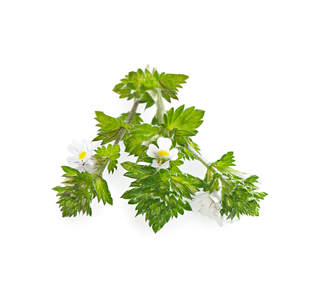
Eyebright, also famous as ‘Euphrasia’ (means: ‘well-being’) and ‘Meadow Eyebright’, is from the family of Orobanchaceae. It is often found in alpine or sub-alpine meadows where snow is common. Its leaves have jagged, toothy edges, which are quite different from other plants. Also, the flowers of eyebright have different variations. They are usually in white, yellow, and red color with a yellow spot in throat.
This plant was known to classical herbalists. However, 21st century researchers and herbalists are taking great interest in it too. Their researches are proving its strength when it comes to treating eye redness, eye swelling, and visual disturbance. They reveal, any eye issue, caused by blepharitis and conjunctivitis, can be relieved by eyebright. Furthermore, it can also assist in reducing eye inflammation. You can use it as an eye wash or eye drops.
There are many other health benefits of this herb. Experts recommend eyebright for treating hay fever, sinusitis, upper respiratory tract infections, nasal irritations, seasonal allergies, and bronchial colds. The most interesting thing about eyebright is it heals skin wounds too quite quickly. It is made into a poultice and used on the wound topically.
Eyebright is available in many forms. You can use it in the form of tea bags, loose dried leaves, capsules, tablets, and powders. This herb is available in oil form too for topical applications. You can use its oil to treat skin conditions and beautify skin. Just remember that, for adults, experts recommend only 2-4 grams of this herb, up to three times each day. If the issue persists even after two weeks, it is better to consult your physician too.
Besides, great precaution is required if you are pregnant or breastfeeding, particularly if you are consuming it in the form of tea, tablets, or capsules.
Properties: Treats eye conditions (eye redness, eye swelling, visual disturbance), hay fever, upper respiratory tract infections, seasonal allergies, nasal irritations. It also heal skin wound, skin infections like acne, and skin inflammation. It facilitates in tightening skin too.
BUY AT AMAZON.COM BUY AT STARWEST BOTANICALS BUY AT IHERB
Sources:
https://www.herbwisdom.com/herb-euphrasia.html
http://www.rjwhelan.co.nz/herbs%20A-Z/eyebright.html
https://www.webmd.com/vitamins-supplements/ingredientmono-109-eyebright.aspx
This plant was known to classical herbalists. However, 21st century researchers and herbalists are taking great interest in it too. Their researches are proving its strength when it comes to treating eye redness, eye swelling, and visual disturbance. They reveal, any eye issue, caused by blepharitis and conjunctivitis, can be relieved by eyebright. Furthermore, it can also assist in reducing eye inflammation. You can use it as an eye wash or eye drops.
There are many other health benefits of this herb. Experts recommend eyebright for treating hay fever, sinusitis, upper respiratory tract infections, nasal irritations, seasonal allergies, and bronchial colds. The most interesting thing about eyebright is it heals skin wounds too quite quickly. It is made into a poultice and used on the wound topically.
Eyebright is available in many forms. You can use it in the form of tea bags, loose dried leaves, capsules, tablets, and powders. This herb is available in oil form too for topical applications. You can use its oil to treat skin conditions and beautify skin. Just remember that, for adults, experts recommend only 2-4 grams of this herb, up to three times each day. If the issue persists even after two weeks, it is better to consult your physician too.
Besides, great precaution is required if you are pregnant or breastfeeding, particularly if you are consuming it in the form of tea, tablets, or capsules.
Properties: Treats eye conditions (eye redness, eye swelling, visual disturbance), hay fever, upper respiratory tract infections, seasonal allergies, nasal irritations. It also heal skin wound, skin infections like acne, and skin inflammation. It facilitates in tightening skin too.
BUY AT AMAZON.COM BUY AT STARWEST BOTANICALS BUY AT IHERB
Sources:
https://www.herbwisdom.com/herb-euphrasia.html
http://www.rjwhelan.co.nz/herbs%20A-Z/eyebright.html
https://www.webmd.com/vitamins-supplements/ingredientmono-109-eyebright.aspx
HYDRANGEA
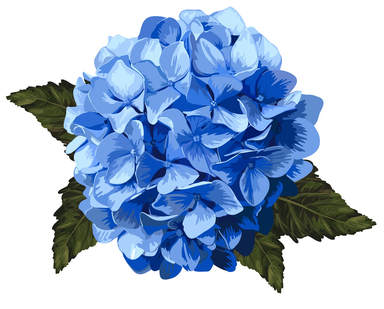
Hydrangea is more than just a beautiful flowering plant. It is an ornamental and medicinal plant found in North America, South America, and Asia. It has 70-75 species too, that’s why its properties depend on its specie too. However, most species share the same benefits.
The roots of Hydrangea plant contain many phytochemicals and nutrients like calcium, zinc, and selenium. Therefore, they are greatly important for herbalists, as they use it to treat numerous health conditions. Some people attempt to use the leaves of Hydrangea plants too. However, herbalists don’t recommend that all. Since, their leaves contain toxic substances. They should never be consumed for recreational or medicinal purposes.
Is it a new herb? If you are pondering this, it is not. We perceive most herbs are from Greek and Roman times. But interestingly Hydrangea shows up in the fossils record, as far back as 25 million years ago. In recent times, its actual popularity grew in the 1730s when English people used its roots, which contains several active alkaloids, to treat simple health conditions like cold and fever.
The most common use of Hydrangea is to treat kidneys and bladder. Since, the chemicals in this herb cause increase urine output which assist in treating urinary tract problems. Experts confirm its diuretic properties through numerous lab test and researches. They state that the increase in the flow of urine remove impurities from your body. This not only treats kidneys, but also improves your overall health.
Apart from this, one of the most important compounds of Hydrangea, halofuginone, cures autoimmune disorders. It treats the disorder, while allowing your immune system to function normally as well. This same compound of Hydrangea also facilitates in treating malaria, enlarged prostate, kidney stones and blood sugar imbalances. In addition, the bark of this herb is as important as the root. It helps in relieving wounds, and sore muscles.
Properties: Treat wounds, sore muscles, burns, and sprain. It also facilitates in curing rheumatoid arthritis, multiple sclerosis, inflammatory bowel disease, urinary tract problems, and autoimmune disorders. One can use this herb for treat chronic chest pains as well.
Sources:
https://jonbarron.org/herbal-library/nutraceuticals/hydrangea-root
https://www.mountainroseherbs.com/products/hydrangea-root/profile
https://www.livestrong.com/article/263700-what-are-the-benefits-of-hydrangea-root-herb/
The roots of Hydrangea plant contain many phytochemicals and nutrients like calcium, zinc, and selenium. Therefore, they are greatly important for herbalists, as they use it to treat numerous health conditions. Some people attempt to use the leaves of Hydrangea plants too. However, herbalists don’t recommend that all. Since, their leaves contain toxic substances. They should never be consumed for recreational or medicinal purposes.
Is it a new herb? If you are pondering this, it is not. We perceive most herbs are from Greek and Roman times. But interestingly Hydrangea shows up in the fossils record, as far back as 25 million years ago. In recent times, its actual popularity grew in the 1730s when English people used its roots, which contains several active alkaloids, to treat simple health conditions like cold and fever.
The most common use of Hydrangea is to treat kidneys and bladder. Since, the chemicals in this herb cause increase urine output which assist in treating urinary tract problems. Experts confirm its diuretic properties through numerous lab test and researches. They state that the increase in the flow of urine remove impurities from your body. This not only treats kidneys, but also improves your overall health.
Apart from this, one of the most important compounds of Hydrangea, halofuginone, cures autoimmune disorders. It treats the disorder, while allowing your immune system to function normally as well. This same compound of Hydrangea also facilitates in treating malaria, enlarged prostate, kidney stones and blood sugar imbalances. In addition, the bark of this herb is as important as the root. It helps in relieving wounds, and sore muscles.
Properties: Treat wounds, sore muscles, burns, and sprain. It also facilitates in curing rheumatoid arthritis, multiple sclerosis, inflammatory bowel disease, urinary tract problems, and autoimmune disorders. One can use this herb for treat chronic chest pains as well.
Sources:
https://jonbarron.org/herbal-library/nutraceuticals/hydrangea-root
https://www.mountainroseherbs.com/products/hydrangea-root/profile
https://www.livestrong.com/article/263700-what-are-the-benefits-of-hydrangea-root-herb/
LAVENDER

Nearly 40 plants in the mint family are known as Lavender. But, the most common form, which is packed with immense health benefits, is Lavandula Augustifolia. This lavender is available in almost all parts of the world. And, perhaps, that’s why it is widely used in its massive range of applications. Herbalists from all walks of life use it because of its powerful effects on human body. They use its stems, leaves, and flowers to treat many ailments.
It is quite easy to identify Lavender. Its needle-like foliage has a balsam like scent. It is either in bluish green color or in gray. It has indeed the shades of these two colors. In addition, overall height of this plant is around three feet if the growing conditions are right.
Lavender has many constituents that make it an important herb in the medical field. It constituents include terpinenol, cineole, borneol, camphor, rosmarinic acid, triterpenoids, flavonoids, linabol, and etc. Furthermore, it is aromatic, insect repellent, and sedative.
Besides, medicinally, there are lots of other health benefits of Lavender too. For example, if you deal with chronic headaches or migraine, it can work as a head balm or essential oil to alleviate your pain. All you need is to just rub it on the temples at the first sign of head ache. Next, it also promotes deep sleep. Its scent is sedative. Trouble sleepers can slip into the dreamland while relishing its fragrances. It relaxes their mind and soothes muscles.
Other than that, if you have skin issues like acne or rashes, infuse it in water and then use it on your skin. You can even take bath with it. Its antiseptic properties will banish all the acne and rash problems within a few days. It also cures bruises and scrapes, but it is better to use it as a cooling remedy for them. Keep its water bottle in the refrigerator for a few minutes before applying it on bruises or fresh scars.
Properties: Promotes sleep, reduce headache, treats chronic migraine issues, assists in curing skin diseases, heals bruises and scars, lessens anxiety and stress, possesses anti-inflammatory qualities, improves the quality of your hair, and protects heart health.
Sources:
https://www.organicfacts.net/health-benefits/herbs-and-spices/lavender.html
http://extension.illinois.edu/herbs/lavender.cfm
https://www.anniesremedy.com/lavandula-lavender.php
It is quite easy to identify Lavender. Its needle-like foliage has a balsam like scent. It is either in bluish green color or in gray. It has indeed the shades of these two colors. In addition, overall height of this plant is around three feet if the growing conditions are right.
Lavender has many constituents that make it an important herb in the medical field. It constituents include terpinenol, cineole, borneol, camphor, rosmarinic acid, triterpenoids, flavonoids, linabol, and etc. Furthermore, it is aromatic, insect repellent, and sedative.
Besides, medicinally, there are lots of other health benefits of Lavender too. For example, if you deal with chronic headaches or migraine, it can work as a head balm or essential oil to alleviate your pain. All you need is to just rub it on the temples at the first sign of head ache. Next, it also promotes deep sleep. Its scent is sedative. Trouble sleepers can slip into the dreamland while relishing its fragrances. It relaxes their mind and soothes muscles.
Other than that, if you have skin issues like acne or rashes, infuse it in water and then use it on your skin. You can even take bath with it. Its antiseptic properties will banish all the acne and rash problems within a few days. It also cures bruises and scrapes, but it is better to use it as a cooling remedy for them. Keep its water bottle in the refrigerator for a few minutes before applying it on bruises or fresh scars.
Properties: Promotes sleep, reduce headache, treats chronic migraine issues, assists in curing skin diseases, heals bruises and scars, lessens anxiety and stress, possesses anti-inflammatory qualities, improves the quality of your hair, and protects heart health.
Sources:
https://www.organicfacts.net/health-benefits/herbs-and-spices/lavender.html
http://extension.illinois.edu/herbs/lavender.cfm
https://www.anniesremedy.com/lavandula-lavender.php
LILLY OF THE VALLEY
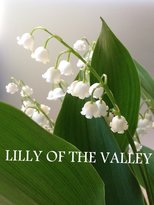
Lily of the valley is a flowering plant from the asparagus family. It blooms in late spring and is often found in the Northern Hemisphere in Asia and Europe. It sends up a single flower that has as many as 12 white small flowers. Herbalists call it by different names, such as May Bells and Mary’s Tears. Since, it is very special and different appearance.
The leaves of lily of the valley are upright, glossy-green. They can reach a length of approximately 9 inches with 4-inch width. Furthermore, its bell shaped flowers have 5-10 mm diameter. They have sweet-scented petals that make it more mesmerizing. Because of this sweet-scent of lily of the valley, it is associated with happiness, humility, and vision of better world. And, that’s why, it has significant role in mythological stories as well.
Lily of the valley has many properties. It is antispasmodic, diuretic, laxative, emetic, and sedative. Furthermore, the effect of this plant is more gradual. Therefore, it doesn’t pose toxic problem to the kidneys. But, if you would exceed its dosage or use it for a long term, it can cause some side effects. For that reason, herbalists don’t recommend its use during pregnancy or lactation. They also don’t utilize its red berries as well for medicinal purposes, as they are highly poisonous. They only use its leaves for treating ailments.
Probably, because of these reasons, experts call it a restricted herb. According to them, it should be used only under the supervision of a qualified herbalist.
However, it doesn’t mean it is without any health benefits. Its benefits outweigh its cons. For example, this lily of the valley is known as a cardiac tonic too. It facilitates in curing many heart health issues. In addition, it also helps in easing mental problems like depression, stress, headaches, and melancholy.
Properties: Antispasmodic, diuretic, laxative, sedative, and emetic. It also eases mental problems, treats congestive heart failures, lessens chest pains caused by spasms, treats urinary tract infection, keeps digestion healthy, breaks kidney stones, and reduces swelling.
Sources:
http://www.stylecraze.com/articles/amazing-health-benefits-of-lily-of-the-valley/#gref
https://www.herbal-supplement-resource.com/lily-of-the-valley.html
https://www.thespruce.com/lily-of-the-valley-2132623
The leaves of lily of the valley are upright, glossy-green. They can reach a length of approximately 9 inches with 4-inch width. Furthermore, its bell shaped flowers have 5-10 mm diameter. They have sweet-scented petals that make it more mesmerizing. Because of this sweet-scent of lily of the valley, it is associated with happiness, humility, and vision of better world. And, that’s why, it has significant role in mythological stories as well.
Lily of the valley has many properties. It is antispasmodic, diuretic, laxative, emetic, and sedative. Furthermore, the effect of this plant is more gradual. Therefore, it doesn’t pose toxic problem to the kidneys. But, if you would exceed its dosage or use it for a long term, it can cause some side effects. For that reason, herbalists don’t recommend its use during pregnancy or lactation. They also don’t utilize its red berries as well for medicinal purposes, as they are highly poisonous. They only use its leaves for treating ailments.
Probably, because of these reasons, experts call it a restricted herb. According to them, it should be used only under the supervision of a qualified herbalist.
However, it doesn’t mean it is without any health benefits. Its benefits outweigh its cons. For example, this lily of the valley is known as a cardiac tonic too. It facilitates in curing many heart health issues. In addition, it also helps in easing mental problems like depression, stress, headaches, and melancholy.
Properties: Antispasmodic, diuretic, laxative, sedative, and emetic. It also eases mental problems, treats congestive heart failures, lessens chest pains caused by spasms, treats urinary tract infection, keeps digestion healthy, breaks kidney stones, and reduces swelling.
Sources:
http://www.stylecraze.com/articles/amazing-health-benefits-of-lily-of-the-valley/#gref
https://www.herbal-supplement-resource.com/lily-of-the-valley.html
https://www.thespruce.com/lily-of-the-valley-2132623
NETTLES

Nettles have been used for centuries to treat allergy symptoms. According to Dr. Andrew Wiel, a renowned author of Natural Medicine, when it comes to allergy relief, he knows of nothing more effective than nettle. Though, most people remember it because of its sting as it causes burning sensations, but in reality, this pain causing plant is a solution to treat their allergy issues. They can count on it, without getting worried regarding its side effects.
It is the first plan that rises up in the spring and graces the world with green. You can find it in almost every part of the world. But, its ideal growing conditions are in the colder regions of Europe and Asia. The height of this plant is around 4 feet and it blooms from June to September. It has heart-shaped leaves with yellow and pink flowers. Though, it is a wild plant, but you can cultivate it on your own in a nitrogen-rich soil.
The benefits of this herb have been studies extensively. They have shown promising signs in treating numerous diseases, such as Alzheimer, Arthritis, Asthma, Bladder Infection, and prostate enlargement. Professional herbalists believe that this entire plant is beneficial for human health. For that reason, they use its stems and leaves for making medicines.
However, at the same time, they utilize its root too because of its immense pharmacological qualities. The combinations of these three parts of this plant allow them to treat many health issues. Since, each part has its own specific set of benefits.
Despite its reputation in a common person’s eye (stinging plant), research shows that it has antioxidant, antimicrobial, anti-ulcer, and analgesic properties. But, it is mostly famous for treating Benign Prostatic Hyperplasia (BPH) and Urinary issues. It has chemicals that affect hormones that cause BPH. These chemicals assist in preventing prostate cancer cells too.
Properties: Antioxidant, antimicrobial, anti-ulcer, and astringent. It treats Benign Prostatic Hyperplasia (BPH), urinary issues, osteoarthritis and joint pain, hay fever, and skin diseases like eczema. It also promotes lactation, stimulates hair growth, and controls blood sugar.
Sources:
https://www.herbal-supplement-resource.com/stinging-nettle-herb.html
https://www.herbwisdom.com/herb-nettle.html
https://draxe.com/stinging-nettle/
It is the first plan that rises up in the spring and graces the world with green. You can find it in almost every part of the world. But, its ideal growing conditions are in the colder regions of Europe and Asia. The height of this plant is around 4 feet and it blooms from June to September. It has heart-shaped leaves with yellow and pink flowers. Though, it is a wild plant, but you can cultivate it on your own in a nitrogen-rich soil.
The benefits of this herb have been studies extensively. They have shown promising signs in treating numerous diseases, such as Alzheimer, Arthritis, Asthma, Bladder Infection, and prostate enlargement. Professional herbalists believe that this entire plant is beneficial for human health. For that reason, they use its stems and leaves for making medicines.
However, at the same time, they utilize its root too because of its immense pharmacological qualities. The combinations of these three parts of this plant allow them to treat many health issues. Since, each part has its own specific set of benefits.
Despite its reputation in a common person’s eye (stinging plant), research shows that it has antioxidant, antimicrobial, anti-ulcer, and analgesic properties. But, it is mostly famous for treating Benign Prostatic Hyperplasia (BPH) and Urinary issues. It has chemicals that affect hormones that cause BPH. These chemicals assist in preventing prostate cancer cells too.
Properties: Antioxidant, antimicrobial, anti-ulcer, and astringent. It treats Benign Prostatic Hyperplasia (BPH), urinary issues, osteoarthritis and joint pain, hay fever, and skin diseases like eczema. It also promotes lactation, stimulates hair growth, and controls blood sugar.
Sources:
https://www.herbal-supplement-resource.com/stinging-nettle-herb.html
https://www.herbwisdom.com/herb-nettle.html
https://draxe.com/stinging-nettle/
NOPAL
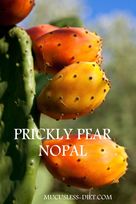
Nopal plant is a common ingredient in many Mexican cuisines dishes. Mexicans eat it raw and cook this food too. They even use it in their marmalades, soup stews, and salads. Since, it is a great healthy type of cacti, and a form of vegetable, with a wide range of health benefits. The vegetative of Nopal are either in green or purple color. And, they have roughly the size of a person’s hand. In other cultures, it is also known as ‘Cactus Pear Fruit’, ‘Barbary Fig’, ‘Indian Fig Prickly Pear’, and ‘Nopal Cactus’.
Nopal Cactus is native to Mexico and Central America only. But, the most interesting thing about this plant is it can be eaten only when it is young. Because, once this cactus becomes older, it is very tough to eat. For that reason, you will only find fresh and young Nopal in the cuisines. However, in order to keep their quality intact and edible, companies can store them for international export. It also helps them in securing their nutritions for a long term.
This exceptional plant isn’t just for flavoring cuisines. It indeed comes with the wealth of health benefits. When we assess its contents, we find calcium, potassium, magnesium, manganese, copper, iron, and fiber.
All these contents contribute to its health boosting power. In addition, it has almost all the vitamins and certain organic compounds like phytochemicals that offer a lot of health benefits. For example, they facilitates in improving digestion, losing weight, protecting skin, boosting metabolism, building strong bones, and improving sleep.
They also avert deadly diseases like cancer. The antioxidants, flavonoid compounds, and vitamin C eliminate the free radicals before they mutate the DNA and change healthy cells into cancerous cells. Moreover, early research shows that consuming Nopal daily can also reduce cholesterol levels in people with high cholesterols.
Luckily, Nopal is available on a wide scale. You can easily purchase it online or from natural food store or drugstores. Keep in mind, if your aim is to treat some chronic condition, and if you are already on medications, consult your physician first.
Properties: Lowers blood sugar levels, cholesterol levels, and blood pressure. It also induces weight loss, boosts the immune system, fights viral infection, and prevents almost all kinds of cancer. It is an antioxidant agent too with rich flavonoid compounds.
BUY ON AMAZON.COM BUY ON STARTWEST BOTANICALS BUY CAPSULES ON IHERB
Sources:
https://jonbarron.org/herbal-library/foods/nopal
https://www.verywell.com/the-benefits-of-nopal-89487
https://www.healthline.com/health/nopal#antiviral
Nopal Cactus is native to Mexico and Central America only. But, the most interesting thing about this plant is it can be eaten only when it is young. Because, once this cactus becomes older, it is very tough to eat. For that reason, you will only find fresh and young Nopal in the cuisines. However, in order to keep their quality intact and edible, companies can store them for international export. It also helps them in securing their nutritions for a long term.
This exceptional plant isn’t just for flavoring cuisines. It indeed comes with the wealth of health benefits. When we assess its contents, we find calcium, potassium, magnesium, manganese, copper, iron, and fiber.
All these contents contribute to its health boosting power. In addition, it has almost all the vitamins and certain organic compounds like phytochemicals that offer a lot of health benefits. For example, they facilitates in improving digestion, losing weight, protecting skin, boosting metabolism, building strong bones, and improving sleep.
They also avert deadly diseases like cancer. The antioxidants, flavonoid compounds, and vitamin C eliminate the free radicals before they mutate the DNA and change healthy cells into cancerous cells. Moreover, early research shows that consuming Nopal daily can also reduce cholesterol levels in people with high cholesterols.
Luckily, Nopal is available on a wide scale. You can easily purchase it online or from natural food store or drugstores. Keep in mind, if your aim is to treat some chronic condition, and if you are already on medications, consult your physician first.
Properties: Lowers blood sugar levels, cholesterol levels, and blood pressure. It also induces weight loss, boosts the immune system, fights viral infection, and prevents almost all kinds of cancer. It is an antioxidant agent too with rich flavonoid compounds.
BUY ON AMAZON.COM BUY ON STARTWEST BOTANICALS BUY CAPSULES ON IHERB
Sources:
https://jonbarron.org/herbal-library/foods/nopal
https://www.verywell.com/the-benefits-of-nopal-89487
https://www.healthline.com/health/nopal#antiviral
PRODIJIOSA
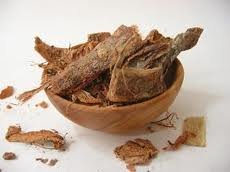
Prodigiosa, also known as Brickellia, is an immensely beneficial herb. It is a flowering plant that comes from the daisy family. It is quite easy to recognize this plant, as the leaves are rich green on the top and gray purple on the underside. The overall height is 70 centimeter while the leaves are up to 12 centimeters long. In Mexican and Native American herbal traditions, it has great importance in lowering blood sugar level and treating diabetes.
In other parts of the world, it is famous as ‘Love Leaf’, ‘Mystical Caribbean’, and ‘Arma poi’. Some people indeed believe that if you want to grow your love, just write name of person you love and then place Prodigiosa leaf over it.
It will connect the hearts and souls and make you fall in love even more.
Other than that, in case you are dealing with headache or stress, all you need is to take its leaf and place it on your head for a few minutes. This will relieve tension & bring calmness.
This shows its versatility and admiration in different parts of the world.
Experts believe that the bitterness of this herb and other components are quite effective in treating many ailments. For example, if you are dealing with digestive problems, you can count on it, as its properties promote healthy digestion because of its bitterness. It actually improves the quantity and quality of the hydrochloric acid that assist in resolving upset stomach issues. Furthermore, it also releases the gastric hormone, which stimulates the function of all digestive organs, such as liver, stomach, and pancreas.
Fortunately, when it comes to preparation of Prodigiosa, it is quite easy. All you need is to steep this herb in the boiling water for at least 10 minutes and enjoy it as tea.
Properties: Improves kidney function, promotes digestion, improves the quantity and quality of hydrochloric acid, evacuates bile from the gall bladder, controls elevated blood sugars, extremely beneficial in type-2 diabetes, and stimulates immune function.
Sources:
http://sacredrootz.com/shop/leaves/brickellia-brickellia-grandiflora/
http://www.herbalsdirect.co.uk/Prodj.html
https://www.originalbotanica.com/fresh-prodigiosa-plant/
In other parts of the world, it is famous as ‘Love Leaf’, ‘Mystical Caribbean’, and ‘Arma poi’. Some people indeed believe that if you want to grow your love, just write name of person you love and then place Prodigiosa leaf over it.
It will connect the hearts and souls and make you fall in love even more.
Other than that, in case you are dealing with headache or stress, all you need is to take its leaf and place it on your head for a few minutes. This will relieve tension & bring calmness.
This shows its versatility and admiration in different parts of the world.
Experts believe that the bitterness of this herb and other components are quite effective in treating many ailments. For example, if you are dealing with digestive problems, you can count on it, as its properties promote healthy digestion because of its bitterness. It actually improves the quantity and quality of the hydrochloric acid that assist in resolving upset stomach issues. Furthermore, it also releases the gastric hormone, which stimulates the function of all digestive organs, such as liver, stomach, and pancreas.
Fortunately, when it comes to preparation of Prodigiosa, it is quite easy. All you need is to steep this herb in the boiling water for at least 10 minutes and enjoy it as tea.
Properties: Improves kidney function, promotes digestion, improves the quantity and quality of hydrochloric acid, evacuates bile from the gall bladder, controls elevated blood sugars, extremely beneficial in type-2 diabetes, and stimulates immune function.
Sources:
http://sacredrootz.com/shop/leaves/brickellia-brickellia-grandiflora/
http://www.herbalsdirect.co.uk/Prodj.html
https://www.originalbotanica.com/fresh-prodigiosa-plant/
|
PURSLANE
Purslane (Portulacaoleracea)is an edible weed with extraordinary value. Despite being classified by the USDA as a noxious weed, it is part of Dr. Sebi Approved food due to the vast array of antioxidants, vitamins and minerals that can be extracted from this herb. This herb is widely used in certain cuisines as a great addition to salads and many other recipes. Many describe the taste as a bit sour but mildly sweet. Since it is a succulent, the leaves are very crisp, which makes it a great add-on for salads. |
Health Benefits of Purslane
Here are the primary benefits that you can enjoy from eating purslane:
Rich in Omega-3 Fatty Acids. Purslane is one of the richest green plant sources of Omega-3 fats. It can lower triglyceride and cholesterol levels while increasing the healthy high density lipoprotein.
Works as an Antioxidant. Purslane leaves have been found to possess higher amount of beta-carotene, ascorbic acid and alpha-tocopherol. Vitamin C (Ascorbic acid) and beta-carotene (Vitamin A) are known to have antioxidant qualities due to their ability to neutralize free radicals and even present certain cancers and cardiovascular disease.
Aid in Weight Loss. Purslane contains very low calorie but a nutrition superstar with high dietary fiber. This means that you can easily feel full and satisfied after consuming a meal of purslane.
Improve Gastrointestinal Diseases. In Traditional Chinese Medicine (TCM), purslane was widely used for treating nearly everything, from hemorrhoids to diarrhea and intestinal bleeding. Even today, it is used for a wide range of digestive condition. The digestive health benefits of purslane are mainly attributed to its natural compounds, including dopamine, citric acid, alanine, glucose, malic acid and many others.
Strong Bones and Teeth. The wide array of minerals found in purslane work together to promote stronger bones and teeth. The elements necessary for building strong bone tissue include calcium, manganese, iron and magnesium. In addition, these minerals help speed up the healing process of bone which can prevent development of osteoporosis.
Improved Circulation. The copper and iron found in purslane help stimulate red blood cell production. When there’s sufficient level of these minerals in the body, there’s more oxygen being delivered to different parts of the body, which increases healing of organs and cells and improves metabolic efficiency.
Purslane grows like a weed in your garden and if you don't have wild purslane in your garden, then you can plant the seeds. I tried dehydrating purslane in my dehydrator but had little success as it holds so much water. When I purchase the powder on Amazon, I found it so much easier to use when the herb is out of season. (I purchase this one.)
Here are the primary benefits that you can enjoy from eating purslane:
Rich in Omega-3 Fatty Acids. Purslane is one of the richest green plant sources of Omega-3 fats. It can lower triglyceride and cholesterol levels while increasing the healthy high density lipoprotein.
Works as an Antioxidant. Purslane leaves have been found to possess higher amount of beta-carotene, ascorbic acid and alpha-tocopherol. Vitamin C (Ascorbic acid) and beta-carotene (Vitamin A) are known to have antioxidant qualities due to their ability to neutralize free radicals and even present certain cancers and cardiovascular disease.
Aid in Weight Loss. Purslane contains very low calorie but a nutrition superstar with high dietary fiber. This means that you can easily feel full and satisfied after consuming a meal of purslane.
Improve Gastrointestinal Diseases. In Traditional Chinese Medicine (TCM), purslane was widely used for treating nearly everything, from hemorrhoids to diarrhea and intestinal bleeding. Even today, it is used for a wide range of digestive condition. The digestive health benefits of purslane are mainly attributed to its natural compounds, including dopamine, citric acid, alanine, glucose, malic acid and many others.
Strong Bones and Teeth. The wide array of minerals found in purslane work together to promote stronger bones and teeth. The elements necessary for building strong bone tissue include calcium, manganese, iron and magnesium. In addition, these minerals help speed up the healing process of bone which can prevent development of osteoporosis.
Improved Circulation. The copper and iron found in purslane help stimulate red blood cell production. When there’s sufficient level of these minerals in the body, there’s more oxygen being delivered to different parts of the body, which increases healing of organs and cells and improves metabolic efficiency.
Purslane grows like a weed in your garden and if you don't have wild purslane in your garden, then you can plant the seeds. I tried dehydrating purslane in my dehydrator but had little success as it holds so much water. When I purchase the powder on Amazon, I found it so much easier to use when the herb is out of season. (I purchase this one.)
RED CLOVER
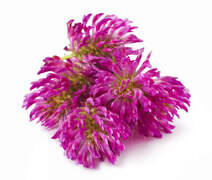
Red Clover, or Trifolium Pratense, is a natural source of bioidentical estrogen. It is from the bean family, Fabaceae, with most prominent three leaves. Because of its unique design and number of leaves, it is famous as three-leaf clover too. You can easily find it in the regions of Asia, Europe, and Northwest Africa.
This plant grows to 20-80 cm tall. Its each leaflet is 15-30 mm long and 8-15 mm broad. The color of these leaflets is green with pale crescent in the outer half of the leaf.
Believe it or not, because of its outstanding medicinal properties (deobstruent, antispasmodic, expectorant, and sedative), Red Clover has become a source of economic stability in Chile. It is grown as a fodder crop, which increase soil fertility too.
Scientists verify that this three-leaf clover also has hormone like chemicals – isoflavones. These valuable chemicals are almost impossible to find in any other herb. They exhibit antioxidant, anticancer, antimicrobial and anti-inflammatory properties. However, it doesn’t mean your diet should be high in isoflavones all the time, since, in large quantities, it can cause reproductive failure and liver disease.
But, Red Clover possesses high nutritional value as well, which assist in treating many health conditions. It can reduce hypertension, boost immune system (because of high doses of vitamin C), neutralize free radicals, prevent infections, ease menstruation and menopause, lower cholesterol, detoxify body (by releasing excess toxins through increased urination), and stimulate healthy circulation for preventing cardiovascular distress.
This herb is very potent. Therefore, herbalists don’t recommend high dosage of it.
Just 85 milligrams of this herb on a daily basis can be considered safe for most adults. If you’re interested in making red clover tea, two spoons of its dried flowers in 8 ounces of hot water are enough. However, don’t opt for more than two tea-cups of Red Clover daily.
Properties: Detoxifies the blood, cleanses liver, keep arteries clear, reduces hypertension, boosts immune system, eases menstruation/menopause, maintains bone mineral density too, lowers inflammation of the skin, neutralizes free radicals, and prevents infection.
BUY AT AMAZON.COM BUY AT STARWEST BOTANICALS BUY AT IHERB
Sources:
https://draxe.com/red-clover/
https://www.organicfacts.net/health-benefits/herbs-and-spices/red-clover.html
https://www.selfhacked.com/blog/health-benefits-red-clover/
This plant grows to 20-80 cm tall. Its each leaflet is 15-30 mm long and 8-15 mm broad. The color of these leaflets is green with pale crescent in the outer half of the leaf.
Believe it or not, because of its outstanding medicinal properties (deobstruent, antispasmodic, expectorant, and sedative), Red Clover has become a source of economic stability in Chile. It is grown as a fodder crop, which increase soil fertility too.
Scientists verify that this three-leaf clover also has hormone like chemicals – isoflavones. These valuable chemicals are almost impossible to find in any other herb. They exhibit antioxidant, anticancer, antimicrobial and anti-inflammatory properties. However, it doesn’t mean your diet should be high in isoflavones all the time, since, in large quantities, it can cause reproductive failure and liver disease.
But, Red Clover possesses high nutritional value as well, which assist in treating many health conditions. It can reduce hypertension, boost immune system (because of high doses of vitamin C), neutralize free radicals, prevent infections, ease menstruation and menopause, lower cholesterol, detoxify body (by releasing excess toxins through increased urination), and stimulate healthy circulation for preventing cardiovascular distress.
This herb is very potent. Therefore, herbalists don’t recommend high dosage of it.
Just 85 milligrams of this herb on a daily basis can be considered safe for most adults. If you’re interested in making red clover tea, two spoons of its dried flowers in 8 ounces of hot water are enough. However, don’t opt for more than two tea-cups of Red Clover daily.
Properties: Detoxifies the blood, cleanses liver, keep arteries clear, reduces hypertension, boosts immune system, eases menstruation/menopause, maintains bone mineral density too, lowers inflammation of the skin, neutralizes free radicals, and prevents infection.
BUY AT AMAZON.COM BUY AT STARWEST BOTANICALS BUY AT IHERB
Sources:
https://draxe.com/red-clover/
https://www.organicfacts.net/health-benefits/herbs-and-spices/red-clover.html
https://www.selfhacked.com/blog/health-benefits-red-clover/
RHUBARB ROOT
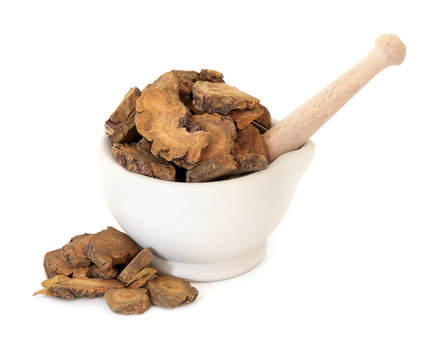
Rhubarb Root, commonly called Chinese Rhubarb, Turkish Rhubarb, or Indian Rhubarb, has a long history of herbal usage. Though, it is popular in the entire world, but it is extensively used in traditional Chinese medicines. Chinese herbalists and botanists try to cultivate it on large scale in China to treat serious health issues like cancer and digestive complaints.
This plant persists as a weed in many gardens; it can grow as much as six feet. The blade and leaves of this plant have high oxalic acid concentration. Therefore, professional herbalists avoid them, because of their poisonous nature, and only focus on its roots. They are first dried and then ground into a yellowish-orange powder.
These roots are sour and bitter in taste, but their extract can be used as antispasmodic, anticholesterolemic, antiseptic, astringent, and diuretic. Moreover, these roots contain anthraquinones. It is a natural occurring compound which is antibacterial, antifungal, antiviral, and antioxidant. This compound protects from conditions likes cancer, diabetes, liver disease, kidney disease, and malaria.
However, large doses of it can cause skin irritations. If you have dealt with dermatitis reactions, it is better to speak your doctor first to ensure the Rhubarb Roots is safe for you.
Apart from this, there are lots of other health benefits of Rhubarb Roots. It treats conditions like diarrhea, constipation, stomach pain, gastrointestinal (GI) bleeding, anal fissures, liver and gall bladder complaints, menstrual problems, intestinal and autoimmune reactions. In addition, when you consume its extract before meals, it enhances appetite too.
The extract of Rhubarb Root has been studied as a possible cure for cancer as well. Since, its aloe-emodin, chrysophanol, emodic, and gallic acid are anti-cancer agents. They also eradicate tumors inside the body. That’s why scientists and physicians have great interest in it. They are trying to explore its potential as herbal treatment for cancer.
Properties: Antispasmodic, anticholesterolemic, antiseptic, astringent, antibacterial, antifungal, antiviral, antioxidant and diuretic. It also treats hypertension, menstrual irregularities, elevated blood lipids, diarrhea, heartburn, constipation and stomach pain.
BUY ON AMAZON.COM BUY ON STARWEST BOTANICALS BUY ON IHERB
Sources:
https://www.chrysalisnaturalmedicine.com/rhubarb-root-rheum-palmatum/
https://www.herbal-supplement-resource.com/chinese-rhubarb.html
http://www.rhubarbinfo.com/medicinal
This plant persists as a weed in many gardens; it can grow as much as six feet. The blade and leaves of this plant have high oxalic acid concentration. Therefore, professional herbalists avoid them, because of their poisonous nature, and only focus on its roots. They are first dried and then ground into a yellowish-orange powder.
These roots are sour and bitter in taste, but their extract can be used as antispasmodic, anticholesterolemic, antiseptic, astringent, and diuretic. Moreover, these roots contain anthraquinones. It is a natural occurring compound which is antibacterial, antifungal, antiviral, and antioxidant. This compound protects from conditions likes cancer, diabetes, liver disease, kidney disease, and malaria.
However, large doses of it can cause skin irritations. If you have dealt with dermatitis reactions, it is better to speak your doctor first to ensure the Rhubarb Roots is safe for you.
Apart from this, there are lots of other health benefits of Rhubarb Roots. It treats conditions like diarrhea, constipation, stomach pain, gastrointestinal (GI) bleeding, anal fissures, liver and gall bladder complaints, menstrual problems, intestinal and autoimmune reactions. In addition, when you consume its extract before meals, it enhances appetite too.
The extract of Rhubarb Root has been studied as a possible cure for cancer as well. Since, its aloe-emodin, chrysophanol, emodic, and gallic acid are anti-cancer agents. They also eradicate tumors inside the body. That’s why scientists and physicians have great interest in it. They are trying to explore its potential as herbal treatment for cancer.
Properties: Antispasmodic, anticholesterolemic, antiseptic, astringent, antibacterial, antifungal, antiviral, antioxidant and diuretic. It also treats hypertension, menstrual irregularities, elevated blood lipids, diarrhea, heartburn, constipation and stomach pain.
BUY ON AMAZON.COM BUY ON STARWEST BOTANICALS BUY ON IHERB
Sources:
https://www.chrysalisnaturalmedicine.com/rhubarb-root-rheum-palmatum/
https://www.herbal-supplement-resource.com/chinese-rhubarb.html
http://www.rhubarbinfo.com/medicinal
SAGE
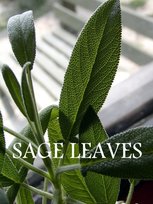
Ancient Egyptians and Greek physicians have used Sage to treat sprains, swelling, ulcers, and bleeding. It was considered to have substantial healing properties. And, the modern, 21st century medical experts are confirming this too. According to them, it has terrific nutritional value which has shown promising signs in treating many diseases.
Sage is native to southern Europe and the Mediterranean region. But you can find it in other warmer climates, such as in North America. It is actually a perennial woody herb, which has unbelievable impact on human health. It has grayish leaves and blue to purplish flowers. Among herbalists, it is also known as Salvia Officinalis, Garden Save, and Culinary Sage.
Several lab tests have confirmed its tremendous nutritional value. Just one tablespoon of sage has 43% vitamin K, which is exactly the same amount our body needs to operate well. Also, it is an excellent source of fiber, vitamin C, vitamin A, vitamin E, calcium, iron, and magnesium. Researchers have also found B-vitamins such as riboflavin in them. They also play a significant role in keeping our body running like a well-oriented machine.
Recent researches reveal that this special herb isn’t only for treating wounds and healing. Its right dosage can facilitate in treating snake bites, boosting female fertility, increasing memory retention, treating inflammation, curing issues like arthritis and gout, neutralizing free radicals, preventing Alzheimer’s disease, strengthening immune system, improving bone health, managing diabetes, and preventing gastric spasms.
Furthermore, you can use this herb for treating many skin conditions like eczema, psoriasis, and acne. All you need is to apply its extracts on a regular basis to the affected area.
This herb is most commonly used in tea form. You can also add it to food while cooking or sprinkle it over salads and sandwiches. Herbalists recommend only 400 mg of sage extract on a daily basis. Just use it in normal doses, as large doses can be toxic for you.
Properties: Sage is antiseptic, antibacterial, and antioxidant. It is an excellent source of fiber, vitamin C, vitamin A, vitamin E, calcium, iron, and magnesium. It also treats conditions like Alzheimer, weak immune system, arthritis, diabetes, and inflammation.
Sources:
https://www.thespruce.com/history-of-sage-1807657
https://www.organicfacts.net/health-benefits/herbs-and-spices/sage.html
https://www.herbwisdom.com/herb-sage.html
Sage is native to southern Europe and the Mediterranean region. But you can find it in other warmer climates, such as in North America. It is actually a perennial woody herb, which has unbelievable impact on human health. It has grayish leaves and blue to purplish flowers. Among herbalists, it is also known as Salvia Officinalis, Garden Save, and Culinary Sage.
Several lab tests have confirmed its tremendous nutritional value. Just one tablespoon of sage has 43% vitamin K, which is exactly the same amount our body needs to operate well. Also, it is an excellent source of fiber, vitamin C, vitamin A, vitamin E, calcium, iron, and magnesium. Researchers have also found B-vitamins such as riboflavin in them. They also play a significant role in keeping our body running like a well-oriented machine.
Recent researches reveal that this special herb isn’t only for treating wounds and healing. Its right dosage can facilitate in treating snake bites, boosting female fertility, increasing memory retention, treating inflammation, curing issues like arthritis and gout, neutralizing free radicals, preventing Alzheimer’s disease, strengthening immune system, improving bone health, managing diabetes, and preventing gastric spasms.
Furthermore, you can use this herb for treating many skin conditions like eczema, psoriasis, and acne. All you need is to apply its extracts on a regular basis to the affected area.
This herb is most commonly used in tea form. You can also add it to food while cooking or sprinkle it over salads and sandwiches. Herbalists recommend only 400 mg of sage extract on a daily basis. Just use it in normal doses, as large doses can be toxic for you.
Properties: Sage is antiseptic, antibacterial, and antioxidant. It is an excellent source of fiber, vitamin C, vitamin A, vitamin E, calcium, iron, and magnesium. It also treats conditions like Alzheimer, weak immune system, arthritis, diabetes, and inflammation.
Sources:
https://www.thespruce.com/history-of-sage-1807657
https://www.organicfacts.net/health-benefits/herbs-and-spices/sage.html
https://www.herbwisdom.com/herb-sage.html
SANTA MARIA
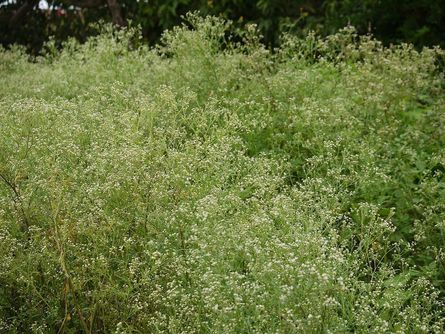
Santa Maria is native to Mexico, Central America, and South America. You can even find it in India, Australia, and parts of Africa. It is a flowering plant in the aster family – Asteraceae, also known as Parthenium Hysterophorus, Whitetop Weed, Gajar Ghans, and Famine Weed.
The leaves of Santa Maria are quite simple, but they are not separated into leaflets. Some of them have teeth on their edges, while others are without them. Apart from this, the flowers are in white, yellow color with 4-5 mm width.
In some areas, where the required temperature is right, this plant grows tremendously and affects crop productions too. Therefore, they are the most feared plants on the earth. Particularly, for farmers, it affects their livestock and invite lots of troubles for them.
This isn’t a new herb. In reality, for centuries, it was used to lower fever and constipation. Our ancestors have used it for various other ailments as well, such as depression, vertigo, and kidney stones. They have used this herbs extract to treat wound and pains.
Recent studies are showing that it still holds a lot of latent health benefits. It is rich in vitamins and minerals and has many other key components like volatile oil, sesquiterpene lactones, and sesquiterpenes (camphor). These features assist this plant in treating issues like arthritis, anxiety, stress, inflammation, migraines, blood clots, and blood pressure.
If you are specifically dealing with heart health problems, Santa Maria can help in that too. It lowers the chances of experiencing atherosclerosis, heart attacks, and strokes. It actually reduces the production of prostaglandins that cause some serious cardiovascular issues.
Bear in mind that it isn’t a perfect kind of herb. There are some side effects as well that can cause dermatitis and respiratory malfunctions in humans. However, its benefits still outweigh its cons. They are beneficial for many out of control ailments.
Properties: Santa Maria treats joint pain, difficult menses, migraine, arthritis, hair fall, fever, cancer, appetite issues, respiratory problems, dermatitis, blood pressure, blood clots, anxiety, stress, inflammation, bruises, headaches, swelling, difficult breathing, and coughs.
Sources:
https://en.wikipedia.org/wiki/Parthenium_hysterophorus
https://www.healthbenefitstimes.com/feverfew/
http://www.cloverleaffarmherbs.com/feverfew-and-tansy/
The leaves of Santa Maria are quite simple, but they are not separated into leaflets. Some of them have teeth on their edges, while others are without them. Apart from this, the flowers are in white, yellow color with 4-5 mm width.
In some areas, where the required temperature is right, this plant grows tremendously and affects crop productions too. Therefore, they are the most feared plants on the earth. Particularly, for farmers, it affects their livestock and invite lots of troubles for them.
This isn’t a new herb. In reality, for centuries, it was used to lower fever and constipation. Our ancestors have used it for various other ailments as well, such as depression, vertigo, and kidney stones. They have used this herbs extract to treat wound and pains.
Recent studies are showing that it still holds a lot of latent health benefits. It is rich in vitamins and minerals and has many other key components like volatile oil, sesquiterpene lactones, and sesquiterpenes (camphor). These features assist this plant in treating issues like arthritis, anxiety, stress, inflammation, migraines, blood clots, and blood pressure.
If you are specifically dealing with heart health problems, Santa Maria can help in that too. It lowers the chances of experiencing atherosclerosis, heart attacks, and strokes. It actually reduces the production of prostaglandins that cause some serious cardiovascular issues.
Bear in mind that it isn’t a perfect kind of herb. There are some side effects as well that can cause dermatitis and respiratory malfunctions in humans. However, its benefits still outweigh its cons. They are beneficial for many out of control ailments.
Properties: Santa Maria treats joint pain, difficult menses, migraine, arthritis, hair fall, fever, cancer, appetite issues, respiratory problems, dermatitis, blood pressure, blood clots, anxiety, stress, inflammation, bruises, headaches, swelling, difficult breathing, and coughs.
Sources:
https://en.wikipedia.org/wiki/Parthenium_hysterophorus
https://www.healthbenefitstimes.com/feverfew/
http://www.cloverleaffarmherbs.com/feverfew-and-tansy/
SARSAPARILLA

Sarsaparilla is a woody, thorny plant from the genus Smilax. It grows deep in the cover of the rainforest. You can easily find it in the warm, tropical area in the world. This plant has different names, including catbriers, carrion flowers, or prickly-ivys. However, the most common name, especially among the herbalists, is Smilax Ornata (formally Smilax Regelii).
For thousands of years, Sarsaparilla has been used as herbal remedy. Especially, native populations in South and Central America used it to relieve a wide range of problems. Historians reveal that this plant was first introduced as herb near the end of Dark Ages. People used it to treat internal and external health problems.
Unlike many other herbs, Sarsaparilla grows quite well. It climbs well and grows over 50 yards long. That’s why, they are known as evergreen shrubs and hanging vines too. They have clusters of red and purple berries, which can be in lustrous black color. And, these berries are popular among humans and birds too.
This plant has gained popularity and respect mainly because of its root, as it has a high concentration of nutrients and organic compounds. Its root is tuberous in shape and can grow between 6-8 feet in length. Herbalists have used its powder in traditional medicines to treat symptoms of sexual impotence, headaches, cold, joint pain, and et cetera.
However, recent scientific studies are confirming that its root is also beneficial for preventing cancer and tumor growth, liver damage, skin problems, and sexually transmitted diseases. It has many active chemical properties, such as antioxidants, saponins, plant sterols, flavonoid antioxidants, anti-inflammatory phytochemicals, and voltaic oils and acids.
Fortunately, there are no known major side effects of using Sarsaparilla. Just avoid taking large doses of it on a consistent basis as it can cause stomach irritation due to saponins.
Properties: antioxidants, saponins, plant sterols, flavonoid antioxidants, anti-inflammatory phytochemicals, voltaic oils and acids, and trace minerals like iron, aluminum, and zinc. It treats sexual impotence, headaches, cold, joint pain, cancer, and immune system.
BUY AT AMAZON BUY AT IHERB BUY AT STARWEST BOTANICALS
Sources:
https://www.herbwisdom.com/herb-sasparilla.html
https://draxe.com/sarsaparilla/
https://www.organicfacts.net/health-benefits/herbs-and-spices/sarsaparilla.html
For thousands of years, Sarsaparilla has been used as herbal remedy. Especially, native populations in South and Central America used it to relieve a wide range of problems. Historians reveal that this plant was first introduced as herb near the end of Dark Ages. People used it to treat internal and external health problems.
Unlike many other herbs, Sarsaparilla grows quite well. It climbs well and grows over 50 yards long. That’s why, they are known as evergreen shrubs and hanging vines too. They have clusters of red and purple berries, which can be in lustrous black color. And, these berries are popular among humans and birds too.
This plant has gained popularity and respect mainly because of its root, as it has a high concentration of nutrients and organic compounds. Its root is tuberous in shape and can grow between 6-8 feet in length. Herbalists have used its powder in traditional medicines to treat symptoms of sexual impotence, headaches, cold, joint pain, and et cetera.
However, recent scientific studies are confirming that its root is also beneficial for preventing cancer and tumor growth, liver damage, skin problems, and sexually transmitted diseases. It has many active chemical properties, such as antioxidants, saponins, plant sterols, flavonoid antioxidants, anti-inflammatory phytochemicals, and voltaic oils and acids.
Fortunately, there are no known major side effects of using Sarsaparilla. Just avoid taking large doses of it on a consistent basis as it can cause stomach irritation due to saponins.
Properties: antioxidants, saponins, plant sterols, flavonoid antioxidants, anti-inflammatory phytochemicals, voltaic oils and acids, and trace minerals like iron, aluminum, and zinc. It treats sexual impotence, headaches, cold, joint pain, cancer, and immune system.
BUY AT AMAZON BUY AT IHERB BUY AT STARWEST BOTANICALS
Sources:
https://www.herbwisdom.com/herb-sasparilla.html
https://draxe.com/sarsaparilla/
https://www.organicfacts.net/health-benefits/herbs-and-spices/sarsaparilla.html
SEA MOSS (IRISH)

Irish Sea Moss is a nutritious healing sea vegetable. It has many other names as well, like Carrageen Moss and Chondrus Crispus. This amazing sea vegetable grows commonly around the shores of Ireland. That’s why, it is more famous as Irish moss, but it doesn’t only grow there. You can abundantly find it in the Atlantic coast of Europe and North America. Its color ranges from green to yellowish and dark purple to purplish brown.
This sea moss is extremely valuable for our health because its 92 out of 100 minerals are found in our bodies. For that reason, Irish people rely on it to avoid starvation and support their health. Bear in mind, this doesn’t mean this herb is edible if it is directly coming from the sea. Since, it will have a rubbery and tough texture. First, you have to simmer it and then consume it as a liquid soup. You can also boil it inside milk to avail its benefits. In Jamaica, some people indeed boil it inside milk to make a thick drink that is aphrodisiac.
When it comes to its nutritional profile, it is exceptional. It has 8.9 mg iron, 144 mg magnesium, 0.5 mg riboflavin, 0.1 mg copper, and 157 mg phosphorus. Furthermore, it is packed with many other special compounds like zinc, manganese, and calcium too.
The best benefit of Irish sea moss is it creates a feeling of fullness. Therefore, it is perfect for those who are attempting to lose weight. Besides, it holds many other health benefits as well. For example, its anti-inflammatory properties make it perfect for injuries, skin, and pains. Furthermore, it supports emotional health, strengthens connective tissues, soothes digestive tract, prevents symptoms of cold and flu, and improves mental functioning.
It is better to avoid its prolonged consumption of it as it functions as a blood thinner too.
Properties: Antiviral, antimicrobial, anti-inflammatory, and detoxifying agent. It supports emotional health, accelerates recovery from join injuries, suppress the appetite, strengthens connective tissues, treats sore throat and chest coughs, and improves mental functioning.
BUY ON AMAZON.COM BUY ON STARWEST BOTANICALS
Sources:
https://www.meghantelpner.com/blog/sea-moss-where-have-you-been-all-my-life/
http://www.naturallifeenergy.com/irish-moss-sea-moss-gel-preparation-benefits/
https://en.wikipedia.org/wiki/Chondrus_crispus
This sea moss is extremely valuable for our health because its 92 out of 100 minerals are found in our bodies. For that reason, Irish people rely on it to avoid starvation and support their health. Bear in mind, this doesn’t mean this herb is edible if it is directly coming from the sea. Since, it will have a rubbery and tough texture. First, you have to simmer it and then consume it as a liquid soup. You can also boil it inside milk to avail its benefits. In Jamaica, some people indeed boil it inside milk to make a thick drink that is aphrodisiac.
When it comes to its nutritional profile, it is exceptional. It has 8.9 mg iron, 144 mg magnesium, 0.5 mg riboflavin, 0.1 mg copper, and 157 mg phosphorus. Furthermore, it is packed with many other special compounds like zinc, manganese, and calcium too.
The best benefit of Irish sea moss is it creates a feeling of fullness. Therefore, it is perfect for those who are attempting to lose weight. Besides, it holds many other health benefits as well. For example, its anti-inflammatory properties make it perfect for injuries, skin, and pains. Furthermore, it supports emotional health, strengthens connective tissues, soothes digestive tract, prevents symptoms of cold and flu, and improves mental functioning.
It is better to avoid its prolonged consumption of it as it functions as a blood thinner too.
Properties: Antiviral, antimicrobial, anti-inflammatory, and detoxifying agent. It supports emotional health, accelerates recovery from join injuries, suppress the appetite, strengthens connective tissues, treats sore throat and chest coughs, and improves mental functioning.
BUY ON AMAZON.COM BUY ON STARWEST BOTANICALS
Sources:
https://www.meghantelpner.com/blog/sea-moss-where-have-you-been-all-my-life/
http://www.naturallifeenergy.com/irish-moss-sea-moss-gel-preparation-benefits/
https://en.wikipedia.org/wiki/Chondrus_crispus
VALERIAN
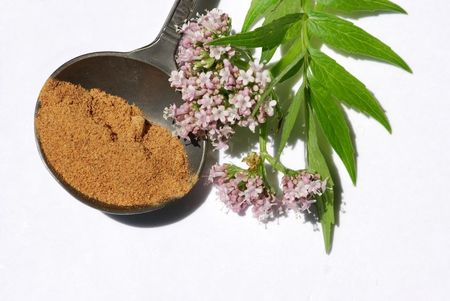
Other common names of Valerian are Valeriana Officinalis, Cut Finger, and Garden Valerian. Due its exceptional health properties, it is famous as all-heal herb too. Even its name indicates the meaning of strong and healthy in the Latin dictionary.
It is a perennial plant, native to Europe and Asia. Its root has enormously important chemical like gamma aminobutyric acid (GABA), which facilitate in treating many brain related issues. If you deal with anxiety or stress or any kind of distress, it means you are struggling with low levels of aminobutyric acid (GABA) in the brain. Consistent use of Valerian increases the GABA levels and banishes all these symptoms.
In other words, its properties contribute to a calming effect in body.
You will often see its crude extract in the forms of capsules, which people use as a dietary supplement to relieve the symptoms of insomnia, stress, and anxiety. They believe it has sedative and anxiolytic effect, which is more natural and powerful than many other drugs.
But, anti-anxiety effect isn’t the only thing. Valerian root has many other components that lower blood pressure, ease menstrual cramp, and improve stress management. Though, remember that it possess some minor side effects too, such as headache, dizziness, and stomach problems. In some cases, you can also deal with irritability and uneasiness.
Professional herbalists don’t recommend more than 900 mg of valerian extract each day. According to them, consuming its extracts 2 hours before the bedtime gives significant results, particularly if you are trying to soothe mind or cure insomnia.
However, one shouldn’t use it for more than 28 days. Since, prolonged use of Valerian can increase the symptoms of insomnia and anxiety, even more. In addition, in case you are pregnant, avoid this herb to stay on the safe side, as it slows down the nervous system.
Properties: Magic sleep potion, hypnotic, antispasmodic, sedative, anxiolytic, nervous system tonic, and muscle relaxant. It is also high in selenium, tin, aluminum, iron, and magnesium. It lowers blood pressure, eases menstrual cramp, and reduces stress.
Sources:
https://theherbalacademy.com/getting-to-know-the-valerian-plant/
https://www.healthline.com/health/food-nutrition/valerian-root
https://www.mountainroseherbs.com/products/valerian-root/profile
It is a perennial plant, native to Europe and Asia. Its root has enormously important chemical like gamma aminobutyric acid (GABA), which facilitate in treating many brain related issues. If you deal with anxiety or stress or any kind of distress, it means you are struggling with low levels of aminobutyric acid (GABA) in the brain. Consistent use of Valerian increases the GABA levels and banishes all these symptoms.
In other words, its properties contribute to a calming effect in body.
You will often see its crude extract in the forms of capsules, which people use as a dietary supplement to relieve the symptoms of insomnia, stress, and anxiety. They believe it has sedative and anxiolytic effect, which is more natural and powerful than many other drugs.
But, anti-anxiety effect isn’t the only thing. Valerian root has many other components that lower blood pressure, ease menstrual cramp, and improve stress management. Though, remember that it possess some minor side effects too, such as headache, dizziness, and stomach problems. In some cases, you can also deal with irritability and uneasiness.
Professional herbalists don’t recommend more than 900 mg of valerian extract each day. According to them, consuming its extracts 2 hours before the bedtime gives significant results, particularly if you are trying to soothe mind or cure insomnia.
However, one shouldn’t use it for more than 28 days. Since, prolonged use of Valerian can increase the symptoms of insomnia and anxiety, even more. In addition, in case you are pregnant, avoid this herb to stay on the safe side, as it slows down the nervous system.
Properties: Magic sleep potion, hypnotic, antispasmodic, sedative, anxiolytic, nervous system tonic, and muscle relaxant. It is also high in selenium, tin, aluminum, iron, and magnesium. It lowers blood pressure, eases menstrual cramp, and reduces stress.
Sources:
https://theherbalacademy.com/getting-to-know-the-valerian-plant/
https://www.healthline.com/health/food-nutrition/valerian-root
https://www.mountainroseherbs.com/products/valerian-root/profile


